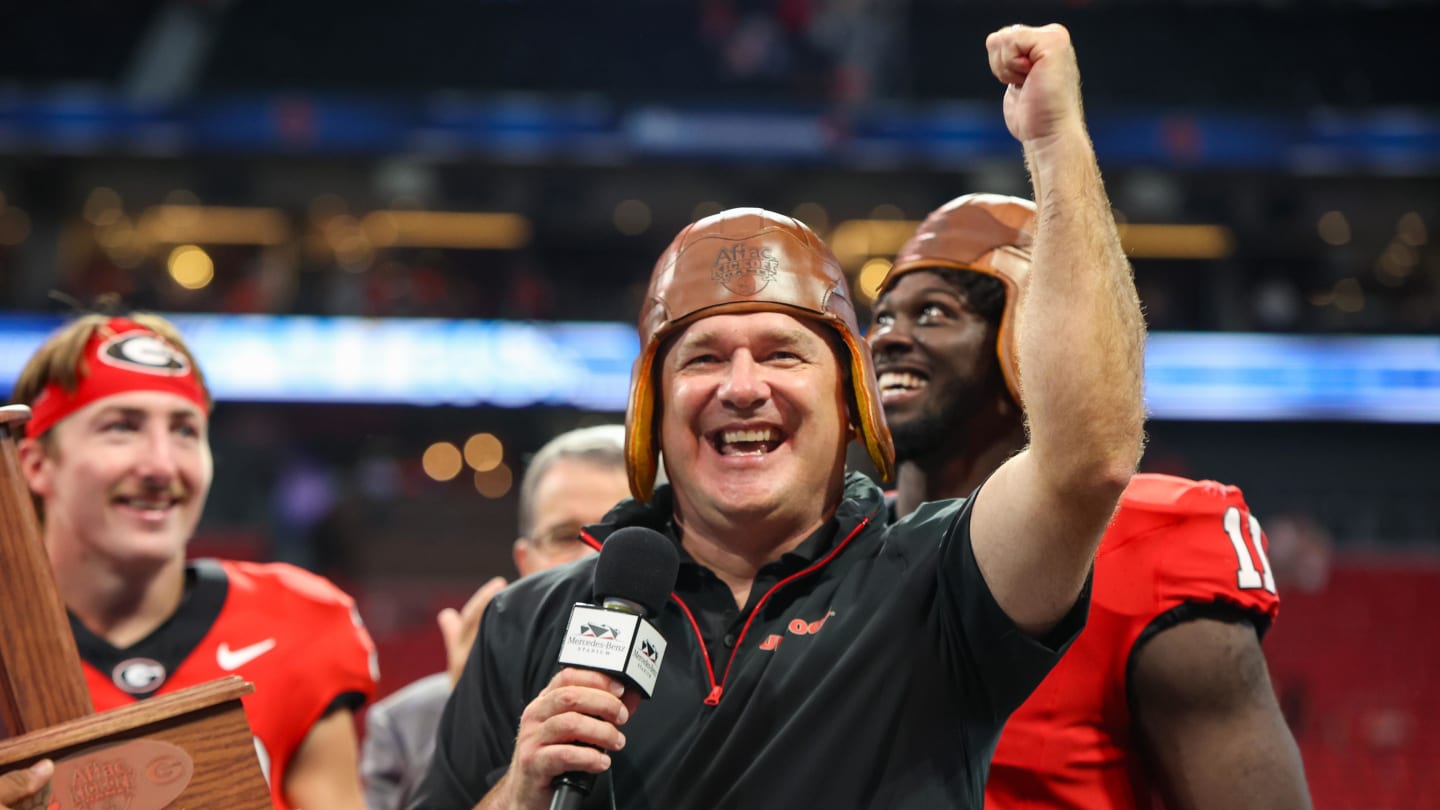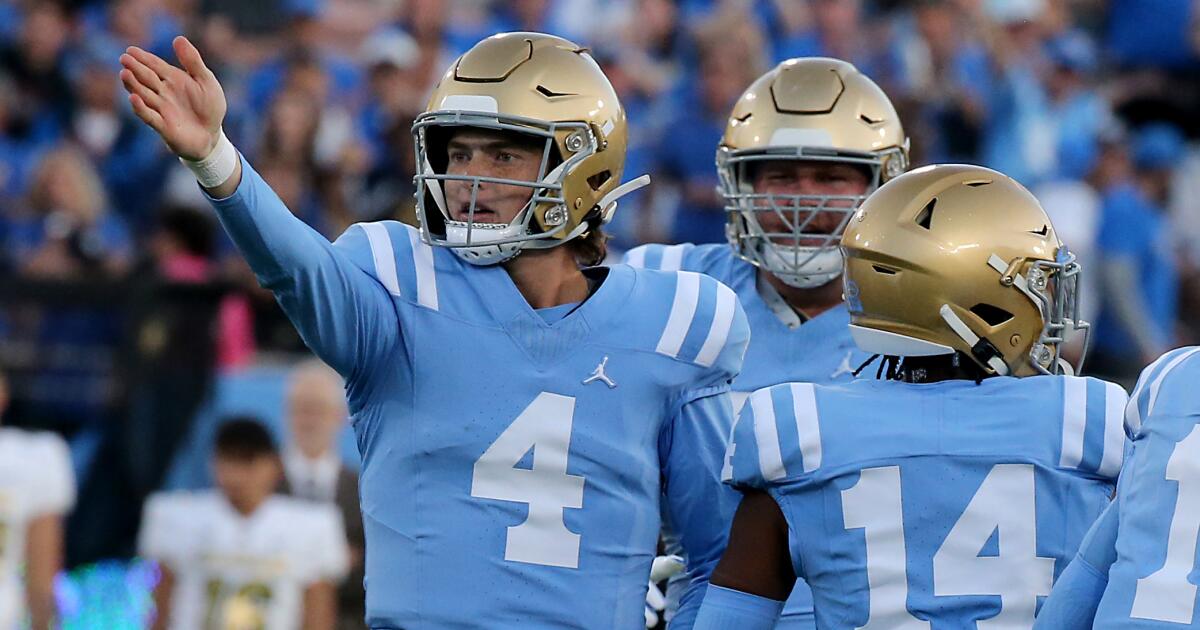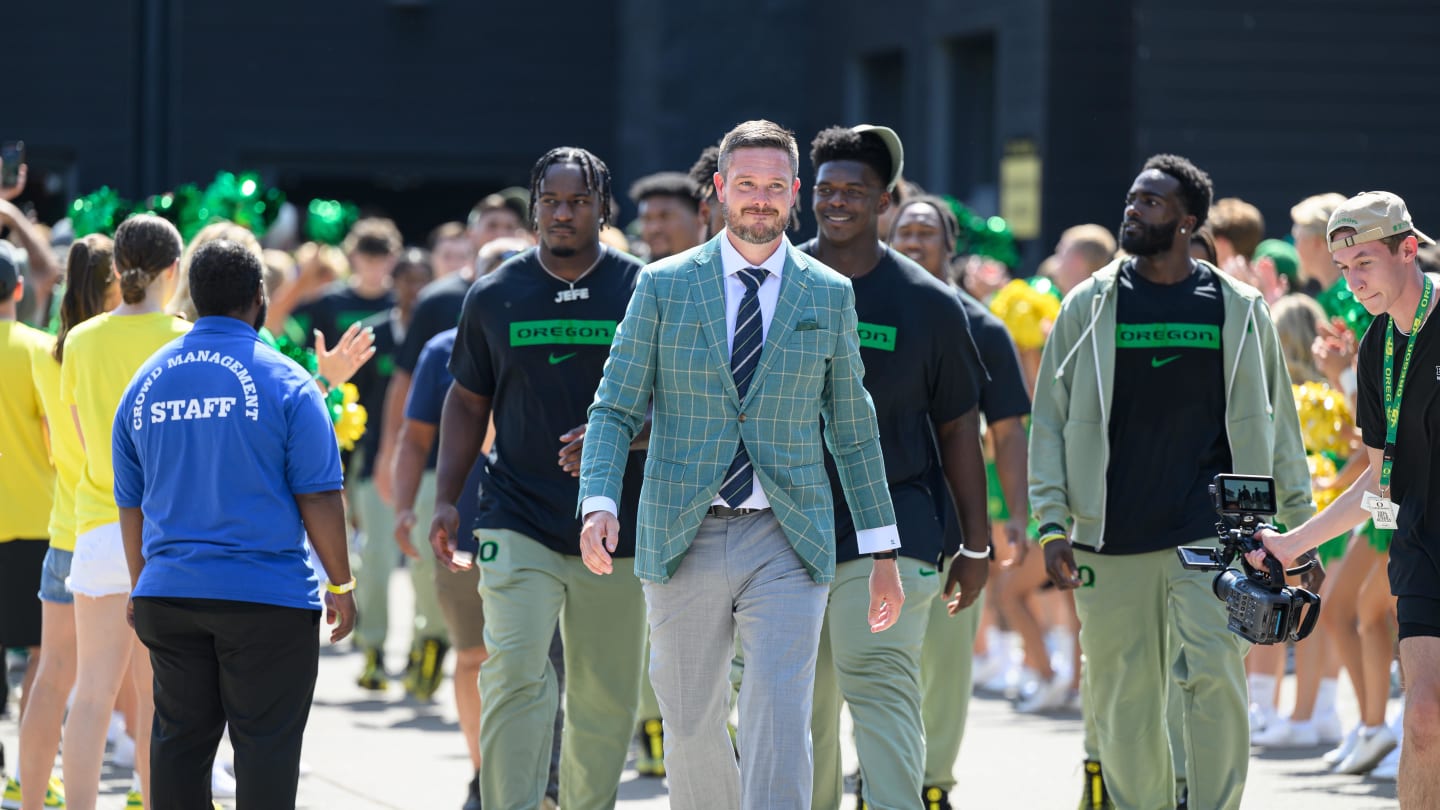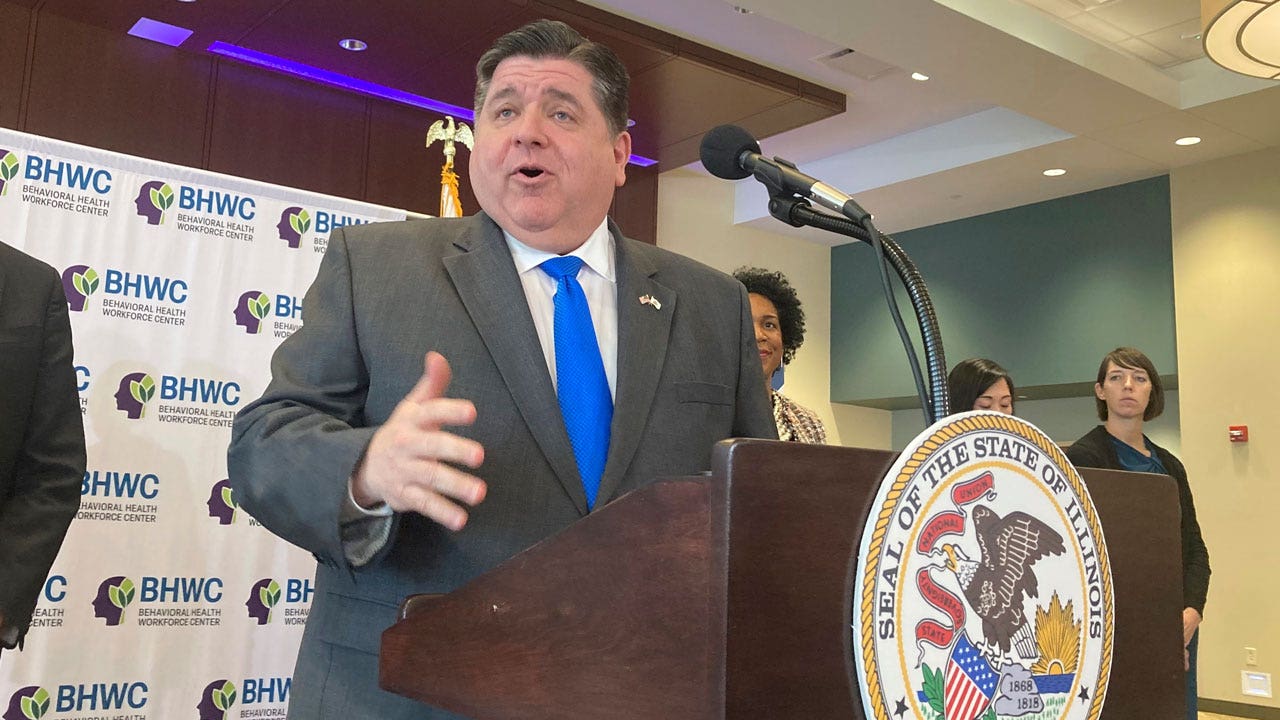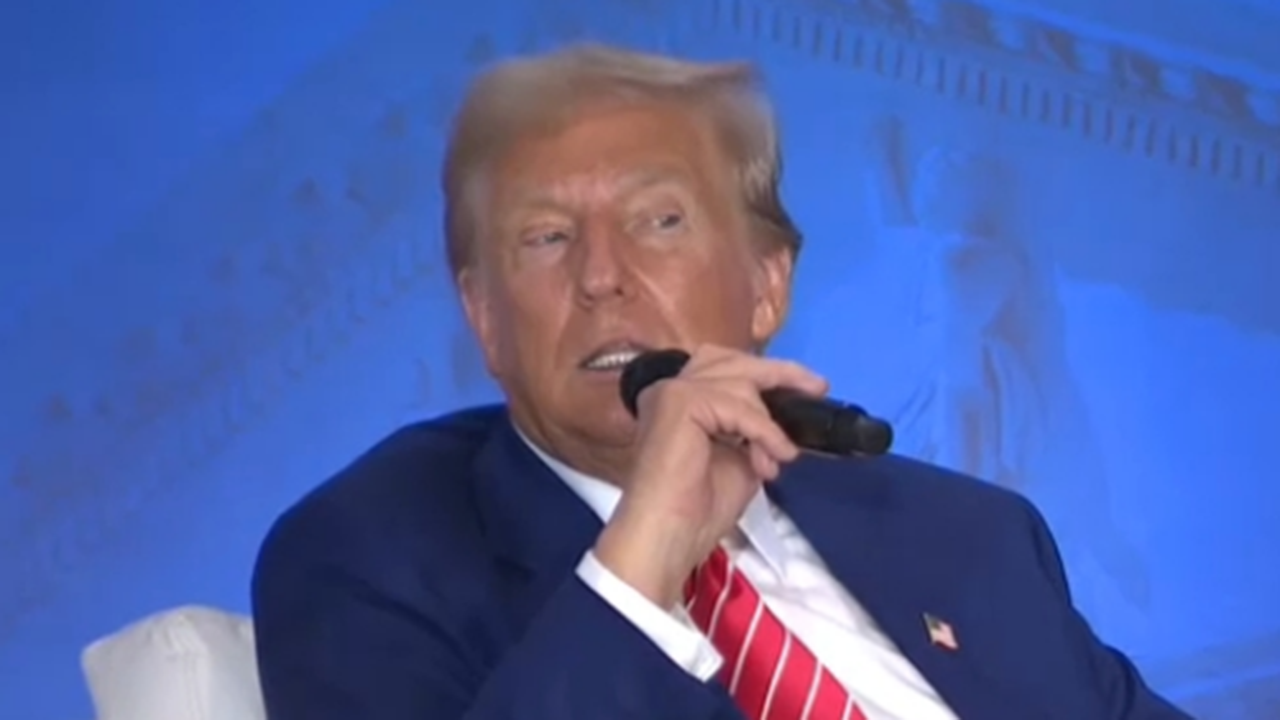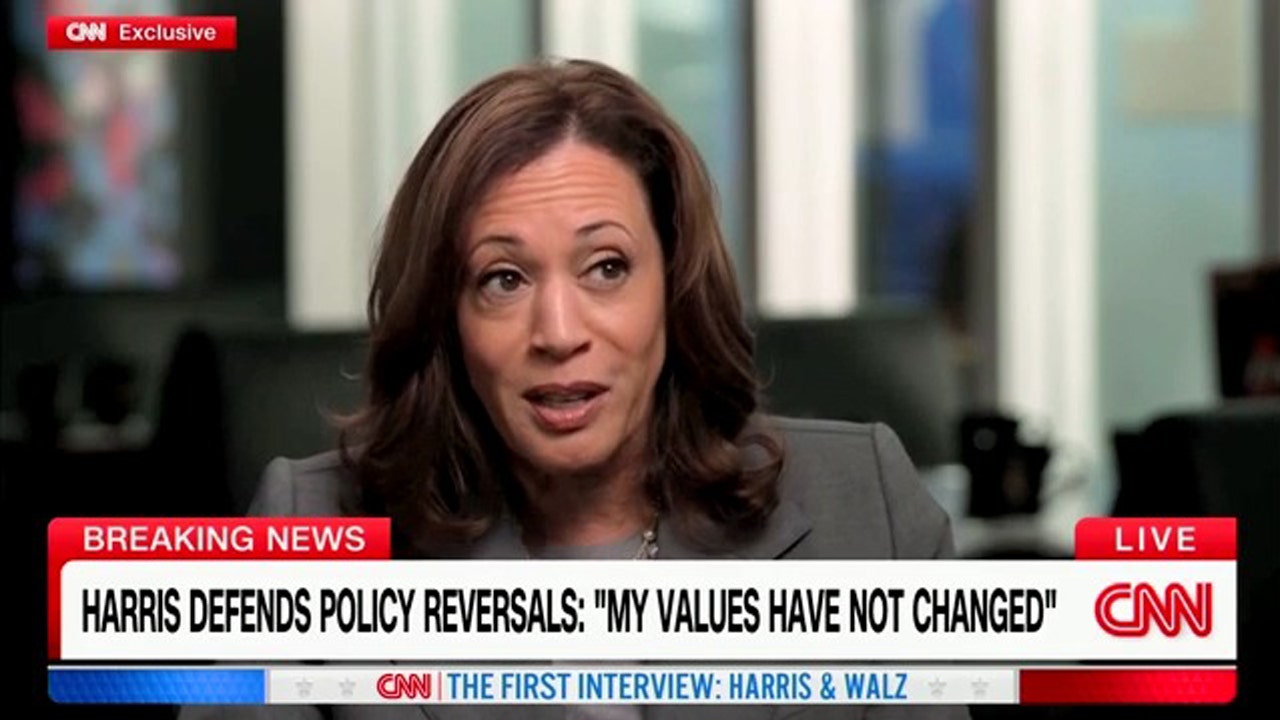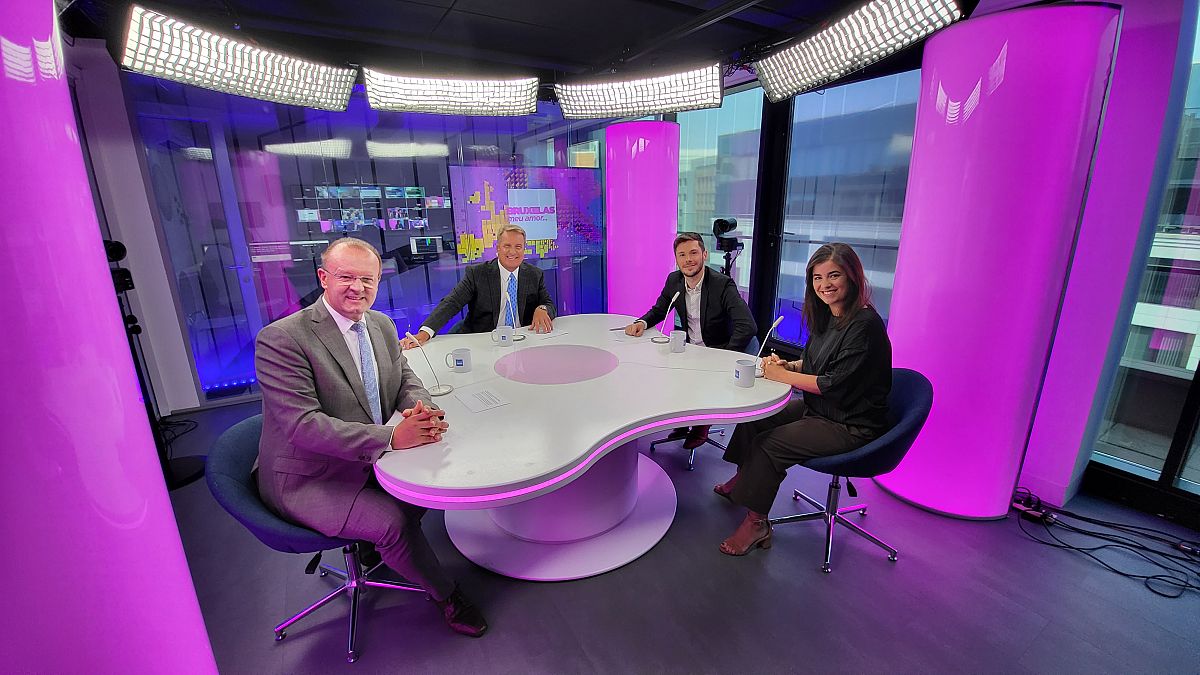Business
Column: This lawsuit has the NCAA staring down extinction. Is that a bad thing?
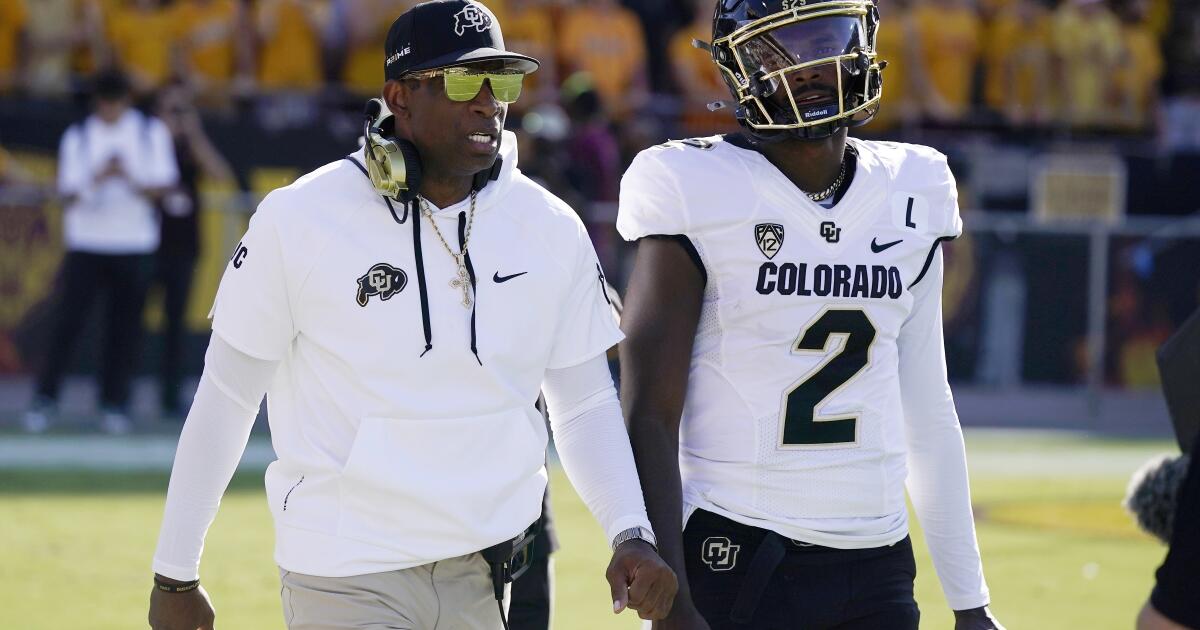
There can be few American public institutions more widely destested than the National Collegiate Athletic Assn.
The NCAA spent decades promoting the ideal of the amateur “student-athlete,” barring football and basketball players from compensation while their coaches and university athletic directors collected millions of dollars a year. Its disciplinary system, rife with favoritism and inconsistencies, is honored by member universities more in the breach than the observance.
And when it doesn’t get its way, it hasn’t been shy about bullying — not that it always works, as when it threatened in 2019 to ban California universities from championship games if the Legislature voted to allow payments to those student-athletes.
Nowhere else in America can businesses get away with agreeing not to pay their workers a fair market rate on the theory that their product is defined by not paying their workers a fair market rate.
— Supreme Court Justice Brett Kavanaugh
(The measure in question passed anyway and was signed into law by Gov. Gavin Newsom.)
As it happens, the very issue covered by that legislation — compensation for the use of college players’ “names, images and likenesses,” or NIL for short — is at the center of what the NCAA implies could be an extinction event for the collegiate sports system as we know it today, if not for the NCAA itself.
The NCAA’s hand-wringing has come about because federal Judge Claudia Wilken of Oakland has certified an antitrust lawsuit naming the association and its five most important regional sports conferences, the so-called Power Five, as a class action.
Wilken designated three classes of plaintiffs: current and former men’s football and basketball players in the Power Five conferences, current and former women’s basketball players in those conferences, and all other current and former athletes who competed on Division I teams prior to July 1, 2021, and have received NIL payments from third parties under the NCAA’s temporary suspension of NIL payment restrictions.
The athletes who brought the case have asked for $1.4 billion in damages, which under antitrust law would be trebled if they win, for a total of $4.2 billion.
A judgment of that magnitude, the NCAA says in an appeal brief, “would necessitate curtailing college sports programs across the country.” It says it would face “intense pressure to settle,” presumably on highly disadvantaged terms — at least for the association, the athletic conferences and the administrators who have been running university programs on a business model dependent on paying athletes virtually nothing.
This problem is the product of the transformation of college football and basketball into big businesses so rich and powerful that they often overwhelm the academic goals of their universities.
Who’s responsible? The NCAA and the universities with big-money programs themselves. They built these enormous financial edifices on a business model based on the players’ free labor.
“The hard work of college athletes,” the plaintiffs observed in their lawsuit, “has translated into billion-dollar television deals, multi-million dollar coaching salaries, extravagant facilities, and lucrative commercial licensing and sponsorship agreements” for the NCAA, its conferences and their executives.
Now that the financial ground is shifting under the feet of the NCAA and the richest athletic programs, they’re feeling the pain from the collapse of their franchise.
The numbers tell the story.
In recent years the Big Ten, Southeastern and Big 12 conferences signed multiyear television deals for football worth a total of more than $12 billion. In 2016, the NCAA renewed its contract with Turner Sports and CBS for broadcast rights to its men’s basketball tournament for $8.8 billion over eight years.
The lawsuit plaintiffs assert that more than 150 football and basketball coaches in the NCAA’s elite Division I earn more than $1 million a year; the best-paid 25 football coaches collect an average of $5.2 million and the top 25 basketball coaches an average of $3.2 million. In fiscal 2021-22, NCAA President Mark Emmert earned nearly $3.3 million, according to NCAA disclosures. Emmert retired earlier this year, but it’s a fair bet that the compensation of his successor, former Massachusetts Gov. Charlie Baker, will be in the same neighborhood.
That should provide context to the NCAA’s long drive to keep student players on a short financial leash, in order to preserve the impression that the players are merely amateurs, playing sports out of love for the game.
The opening of the NIL spigot has provided a bounty for star college football and basketball athletes.
Seven-figure NIL endorsement deals have been signed by marquee players, topped by USC basketball player Bronny James, the son of Lakers star LeBron James, for $5.9 million from Nike and Apple’s Beats by Dre, among other brands; University of Colorado quarterback Shedeur Sanders, the son of former NFL star and current Colorado coach Deion Sanders, for $4.5 million from brands including Adidas and Gatorade; and University of Texas quarterback Arch Manning, the nephew of retired NFL quarterbacks Payton and Eli Manning and grandson of NFL quarterback Archie Manning, for deals totaling an estimated $2.8 million.
Other top players without gilded parentages are also receiving eye-popping deals.
The NCAA’s position that amateurism is crucial to maintaining fans’ enthusiasm for college football and basketball has been under attack for the better part of a decade. In 2014, Wilken chipped away at the NCAA’s ban on NIL compensation, in a landmark case launched in 2009 with former UCLA basketball star Ed O’Bannon as lead plaintiff.
Wilken recognized big-college sports as a business, not amateur competition. But her solution was to allow NCAA schools to set up trust funds of several thousand dollars per player per year to hold their shares of the licensing revenue they had earned until graduation. She rejected the plaintiffs’ proposal to allow student-athletes to make commercial endorsements, because she accepts that the NCAA and its member schools should protect the students from “commercial exploitation.”
The NCAA had already sustained two blows in 2021. In June, the Supreme Court ruled narrowly, but unanimously, that the NCAA was subject to antitrust laws and that its restrictions on certain education-related benefits for athletes breached the laws. In a concurring opinion, Justice Brett Kavanaugh ridiculed the NCAA’s argument that fans would abandon big-time football and basketball if they knew the players were getting paid.
“Nowhere else in America can businesses get away with agreeing not to pay their workers a fair market rate on the theory that their product is defined by not paying their workers a fair market rate,” Kavanaugh wrote.
In the wake of the Supreme Court ruling the NCAA, perhaps detecting the writing on the wall, temporarily suspended its ban on NIL compensation while working out a system of new rules.
The following September, National Labor Relations Board General Counsel Jennifer A. Abruzzo issued a memo defining scholarship athletes at academic institutions as employees. Calling them “student-athletes” is legally a misclassification, Abruzzo said; in fact, she explicitly refused to accept the term in her memo, on the grounds that it had been coined chiefly “to avoid paying workers’ compensation claims to injured athletes.”
Abruzzo drew from the Supreme Court ruling as well as a sea change in the law and what she called “the societal landscape,” which she said “demonstrate that traditional notions that all Players at Academic Institutions are amateurs have changed.” Her memo opened the door to fairer compensation for athletes and even to giving them the right to unionize.
This May, the NLRB’s Los Angeles office followed Abruzzo’s lead by filing a complaint against USC, the Pac-12 Conference and the NCAA, alleging that they broke the law by misclassifying college athletes in men’s and women’s basketball and football as student-athletes rather than employees. The case is pending.
“The conduct of USC, the Pac-12 Conference and the NCAA, as joint employers, deprives their players of their statutory right to organize and to join together to improve their working and playing conditions if they wish to do so,” Abruzzo said at the time.
The truth is that amateurism in college sports — indeed, the very concept of the student-athlete — has always been clothed in the rosy glow of myth. The meet generally regarded as the first intercollegiate athletic contest, the 1852 Harvard-Yale boat race on Lake Winnipesaukee in New Hampshire, was openly a profit-making event, sponsored by a railroad magnate conniving to gin up tourist interest in the lake and its environs.
In that era, collegiate football was a commercial enterprise employing athletes for pay — “‘tramp athletes’ who ‘roamed the country making cameo athletic appearances’ for pay,” as Justice Neil M. Gorsuch wrote in the 2021 Supreme Court opinion. That system prevailed until 1905, when 18 fatalities on the college gridiron provoked President Theodore Roosevelt to force Harvard, Yale and Princeton to codify rules aimed at protecting players from injury.
Roosevelt’s initiative gave birth to the NCAA. As one of its first acts, the NCAA outlawed payments, direct or indirect, to players, thereby defining players as amateurs. The NCAA rode that concept hard for more than a century. Its lawyers coined the term “student-athlete” in the 1950s, but since under-the-table payments still existed it was offered with a cynical wink.
The NCAA is trying to hold back the tide on two fronts. In its appeal of Wilken’s latest ruling, it is arguing that the judge was wrong to certify the three classes of plaintiffs. College players don’t have the common characteristics needed for a class action, the NCAA asserts; nor would it be fair to apportion, say, revenues from a TV deal evenly among all players on a team.
“The value of NIL is inherently tied to each athlete’s unique status and characteristics,” it told the appeals court. “A star quarterback can plainly command more money for the use of his image on the cover of a video game than an unheard-of, backup offensive lineman.”
The NCAA’s second front is on Capitol Hill. The association has been trying to persuade Congress to step in. In an appearance Oct. 17 before the Senate Judiciary Committee, the NCAA’s Baker asked the lawmakers to overrule state laws in 30 states governing NIL payment rights by enacting a federal law.
More tellingly, Baker asked the senators to enact a law affirming that “student-athletes … are not employees of an institution” — in other words, to overturn the NLRB’s doctrine in a way that would stifle the earning rights of most players and eliminate such threats as unionization.
“College sports are a uniquely powerful and beloved institution,” Baker said.
How often have we heard this before? It’s a rare industry that doesn’t come to Capitol Hill pleading that it’s so special that it deserves a tailor-made system of laws and regulations. Baker may claim that his industry is unique, but he sounds exactly like every other business leader looking for a legal bailout.
The NCAA is trapped in a morass of its own making. Its century-old business model has come face to face with 21st century realities, and it needs to deal with the world as it is, instead of trying to keep living in a world of its own.

Business
In College Sports’ Big Money Era, Here’s Where the Dollars Go

What wins college football championships? A potent defense? An explosive offense? In the era of name, image and likeness, it is money.
Lots of it.
It can cost as much as $10.5 million for a title-contending starting offense and defense in the new Power Four conferences. The big-ticket item, of course, lines up behind the center.
A blue-chip quarterback in a Power Four conference — schools like Alabama, Michigan and Washington — can expect to earn hundreds of thousands of dollars annually through name, image and likeness, or N.I.L., deals. A quarterback in the Southeastern Conference can bring in more than $1 million, on average.
Expected annual compensation for starting players in the Power Four conferences by position Source: Opendorse. Data is based on N.I.L. transactions disclosed through or processed by Opendorse between July 1, 2021, and June 30, 2024.
Note: To be included in the calculations players’ earnings must rank in the top 25 at their position. Specialist ($60,000) and Tight End ($140,000) positions are not labeled.
How much top-earning football players make in a year
And that is merely an average. Ask the Texas Longhorns.
Quinn Ewers
$1.7 million
Texas
Their starter, Quinn Ewers, has N.I.L. deals worth nearly $2 million annually, according to the website On3, which tracks deals for college athletes.
Arch Manning
$3.1 million
Texas
Arch Manning, his backup who hails from one of football’s royal families, has deals worth more than $3 million.
Carson Beck
$1.4 million
Georgia
Georgia’s quarterback, Carson Beck, brings in enough that he recently bought a Lamborghini that retails for $270,000.
Between the cash pouring into athletic programs via collectives — a fancy name for boosters who funnel much of the N.I.L. money to players — and more lenient transfer rules, a sort of eBay to buy athletes has been created, transforming how powerhouse teams are built.
“It’s whoever wants to pay, the most money raised, the most money to buy the most players, is going to have the best opportunity to win,” Nick Saban, the recently retired football coach at the University of Alabama, told Congress in March.
But how do athletes, coaches and administrators determine the going rates? Many consult the Black Book, a kind of Zillow for college sports, which details an athlete’s expected annual earnings, and, in the case of sports like football and men’s and women’s basketball, even breaking them down by position and conference.
A series of three proportional area charts related to the N.I.L market. The first square shows the overall size of the N.I.L. market, the second shows that 80 percent of the market is made up by donor groups known as collectives and the third shows that only 30 percent of the market is publicly disclosed.
Opendorse, the company behind the Black Book, projects around $1.7 billion in transactions in the N.I.L. market this year.
Of that, 80 percent will come through collectives like Texas’ Team One Foundation and the Classic City Collective at the University of Georgia. But even that is an incomplete picture of a rapidly changing N.I.L. frontier awash with money.
There is no universal requirement for athletes to disclose how much they are being paid. Less than a third of the money that student athletes are making is publicly known, according to Opendorse.
Still, the Black Book is a must have for university collectives and collegiate athletic officials, as well as the lawyers involved in House v. N.C.A.A., an antitrust case in which the Black Book and all Opendorse data from 2016 through 2022 were subpoenaed. The sides recently agreed to a $2.8 billion settlement.
If a federal judge approves it, schools will be allowed to set aside around $20 million per year, beginning in the fall of 2025, to pay athletes. (The proposal also calls for a program by which athletes’ N.I.L. deals could be reviewed.)
The Black Book, copies of which were obtained by The New York Times, shows that, even as football remains the dominant sport financially, sports like women’s basketball have become increasingly lucrative. In her final season at the University of Iowa, Caitlin Clark sold out arenas, increased television ratings and had sponsorship deals valued at $3 million.
Clark may have been the sport’s unicorn, but title-contending programs are expected to spend more than $730,000 on their starting five, with guards being the most valued at $225,000.
The N.I.L. era has also created a new generation of entrepreneurs and given them a more concrete sense of their earning potential. For instance, Alex Glover, a star volleyball player who recently concluded her career at Southern Methodist University, made more than $100,000 from sponsors who wanted to be associated with her Instagram video series, called “Day-In-The-Life of a D1 Volleyballer.”
Livvy Dunne
$3.9 million
L.S.U.
Olivia Dunne, a gymnast at Louisiana State University, has become something of a celebrity in recent years. Dunne, who goes by Livvy, has leveraged a large social media following — she has over five million followers on Instagram — to notch deals with major brands like Nautica and Vuori.
Paige Bueckers
$1.4 million
Connecticut
Paige Bueckers, a standout basketball star at the University of Connecticut, similarly has millions of followers on social media and has signed N.I.L. deals with Nike, Gatorade and Verizon.
The top N.I.L. earners in women’s gymnastics usually make around $20,000 annually, about 10 times as much as their male counterparts, according to data from Opendorse. Besides the major men’s sports — football, basketball and baseball — collegiate female athletes typically earn more than male athletes in the same sport.
Expected annual compensation in select Olympic sports
Source: Opendorse. Data is based on N.I.L. transactions disclosed through or processed by Opendorse between July 1, 2021, and June 30, 2024.
Note: To be included in the calculations, players’ expected annual earnings must rank in at least the top 50 at their position. The Track/Cross Country category includes athletes in track and field.How men’s and women’s annual earnings compare in smaller sports
“By nature, athletes are disciplined and purpose-driven,” said Blake Lawrence, the co-founder of Opendorse. “What has been really cool to see is how many athletes on our platform, especially the women, lean into the opportunities to be creative and build a brand. They don’t want to get paid just for going to practice and games.”
Lawrence, a former starting linebacker at the University of Nebraska, began Opendorse in 2012 to help his former teammate Prince Amukamara monetize his brand after he entered the N.F.L. as a first-round draft pick with the New York Giants. Lawrence understood the commitment required of college athletes and anticipated that the pay-to-play model was coming sooner rather than later. More than a decade on, some 150,000 athletes have used his platform to grow their name, image and likeness revenues.
The company compiles its numbers based on previous N.I.L. marketing deals signed by a large cross section of football and basketball players and competitors in the so-called nonrevenue Olympic sports. Clients that pay for the information include university athletic departments, their collectives and athlete agencies.
“I know what it takes to be an athlete and wanted to create something like Expedia or Zillow that took the mystery out of getting good value and putting that power in the hands of athletes,” said Lawrence, who offers tutorials on topics like marketing and pay benchmarks on his Instagram feed. “This is all new to them. I see six contracts a second and want them armed with information to make what could be life-changing decisions.”
Like the American economy, college sports have a hierarchy, and its “1 percenters” are the so-called Power conferences like the SEC and the Big Ten.
Expected annual compensation for starting players in each conference by position
Source: Opendorse. Data is based on N.I.L. transactions disclosed through or processed by Opendorse between July 1, 2021, and June 30, 2024.
Note: To be included in the calculations players’ earnings must rank in the top 10 at their position.How the Power Four conferences compare
The expected annual N.I.L. compensation for a top-10-earning football player at any position is $216,000 for the Big Ten and $565,000 in the SEC, which is more than three times the annual earnings of $159,000 in the Big 12.
The SEC’s stature is even more pronounced this year. The former Big 12 powerhouses Texas and Oklahoma have joined the conference, which is made up of state universities that have long taken football seriously and invested heavily in athletics. The top-10-earning SEC players at every position — except for tight ends and specialists — earn more annually on average than players in any other Power Four conference. A running back in the SEC can now expect to make about half a million dollars, almost as much as a Big 12 quarterback. Offensive and defensive linemen in the SEC do even better, tallying upward of $700,000.
For the smaller, so-called Group of Five conferences, which include Conference USA and the Mountain West, the new N.I.L. environment puts football championships even further out of reach. The average value of top 25 players at any position at schools such as Liberty (part of Conference USA) or Boise State (in the Mountain West) is just under $50,000.
The money is lucrative in the top tier of men’s and women’s basketball, as well: A starting five of top-25-earning men’s basketball players costs about $3.3 million, with forwards on the top of the pay scale making around $750,000. And while women’s basketball earnings are comparatively much lower, top-level women’s players have had substantial growth since last year, with pay across all positions up by $30,000.
How much top-earning basketball players make
Expected annual compensation for players, on average, by position
Source: Opendorse. Data is based on N.I.L. transactions disclosed through or processed by Opendorse between July 1, 2021, and June 30, 2024.
Note: To be included in the calculations players’ earnings must rank in the top 25 at their position.
Even better for basketball stars? With their faces and personalities in full view during games, it is easier for them to enhance revenues beyond collective money through sponsorship partnerships with national brands.
This new market allowed Armando Bacot, who played at the University of North Carolina, to remain in college last season and begin work on a master’s degree in business. His partnerships with the Opendorse clients Dunkin and Kellogg’s Frosted Flakes, as well as others with regional and local companies, have made him a multimillionaire.
Many star players like Bacot are now forgoing the ritual of leaving school after just a year or two to enter the N.B.A. Instead of jumping (ready or not) into the draft in search of riches, more players are choosing the ample N.I.L. pay and more time to work on their games and degrees. (Bacot went undrafted and signed with the Utah Jazz this summer.)
“With more and more veteran guys staying in school longer, it’s going to be harder and harder for freshmen to get big minutes, because coaches would rather have veterans,” said Daniel Hennes, the chief executive of Engage, which represents college basketball stars like Bacot in N.I.L. deals. “So, underclassmen will stay in school longer, and the draft will get older and older. In a lot of ways, that’s good for everyone.”
Mike Boynton is among the many college coaches who are not so sure. He brought the future N.B.A. star Cade Cunningham to Oklahoma State with four years of shoe leather. He outworked more accomplished rivals with national titles on their résumés with the promise of doing right by the young star.
“I can’t work that hard anymore,” said Boynton, now an assistant at the University of Michigan. “Not when you can say, ‘Hey, here’s $500,000 to come spend nine months over here.’”
Source: Opendorse. Data is based on N.I.L. transactions disclosed through or processed by Opendorse between July 1, 2021, and June 30, 2024.
Note: To be included in the calculations, players’ expected annual earnings must rank in the top 25 at their position. The Track/Cross Country category includes athletes in track and field.Big sports still pay big money …
… but athletes in the so-called nonrevenue sports are finding increased earnings, too.
For many athletes — those who aren’t top stars in the marquee sports — the N.I.L. era is different, though no less exciting. Zoe Ledet, a 19-year-old sprinter at West Virginia State University, joined TikTok in 2020, at the height of Covid-era teenage boredom. She said she quickly amassed a following for “funny skits, hair care, you know, relatable stuff” and now has 1.7 million followers on the platform and nearly 300,000 on Instagram. Still, Ledet never thought brands would be interested in working with her as an athlete.
“I knew that big track athletes like Sha’Carri could get deals with Nike, but I didn’t know there were smaller deals to be had,” said Ledet, referring to the Olympic sprinter Sha’Carri Richardson.
West Virginia State
Last year, during her freshman season, Ledet was approached by B.E. Collective+, an organization that supports student athletes from historically Black colleges and universities in the N.I.L. market. She signed with the group and had N.I.L. deals worth about $3,500 in her first year.Zoe Ledet
$3,500
For Ledet, those earnings aren’t life-changing money, but she has been able to use platforms like the BE Collective+ and Opendorse to gain a better sense of her value in the new marketplace. Her followers now ask her to post more about track and to share videos from meets, content that she hopes will in turn lead to more N.I.L. deals.
“There are a lot of athletes bigger than me, of course, but N.I.L. has allowed athletes like me to widen our platform and get more recognition, too,” she said.
Source: Opendorse. Data is based on N.I.L. transactions disclosed through or processed by Opendorse between July 1, 2021, and June 30, 2024.
Note: To be included in the calculations, players’ expected annual earnings must rank in at least the top 50 at their position. The Track/Cross Country category includes athletes in track and field.
Look up expected annual N.I.L. earnings by sport
Sport
Position
Div.
Expected annual earnings
Football Football
Quarterback
SEC
$1,043,252
Football Football
Quarterback
Power 4
$819,020
Football Football
Offensive line
SEC
$779,288
Football Football
Defensive line
SEC
$756,497
M. Basketball Men’s basketball
Forward
NCAA DI
$749,201
Football Football
Wide receiver
SEC
$705,554
M. Basketball Men’s basketball
Guard
NCAA DI
$636,472
M. Basketball Men’s basketball
All
NCAA DI
$630,796
Football Football
Wide receiver
Power 4
$614,561
Football Football
Linebacker
SEC
$584,629
Business
'My kids go to Costco now,' and other reasons Rite Aid, Walgreens and CVS are hurting
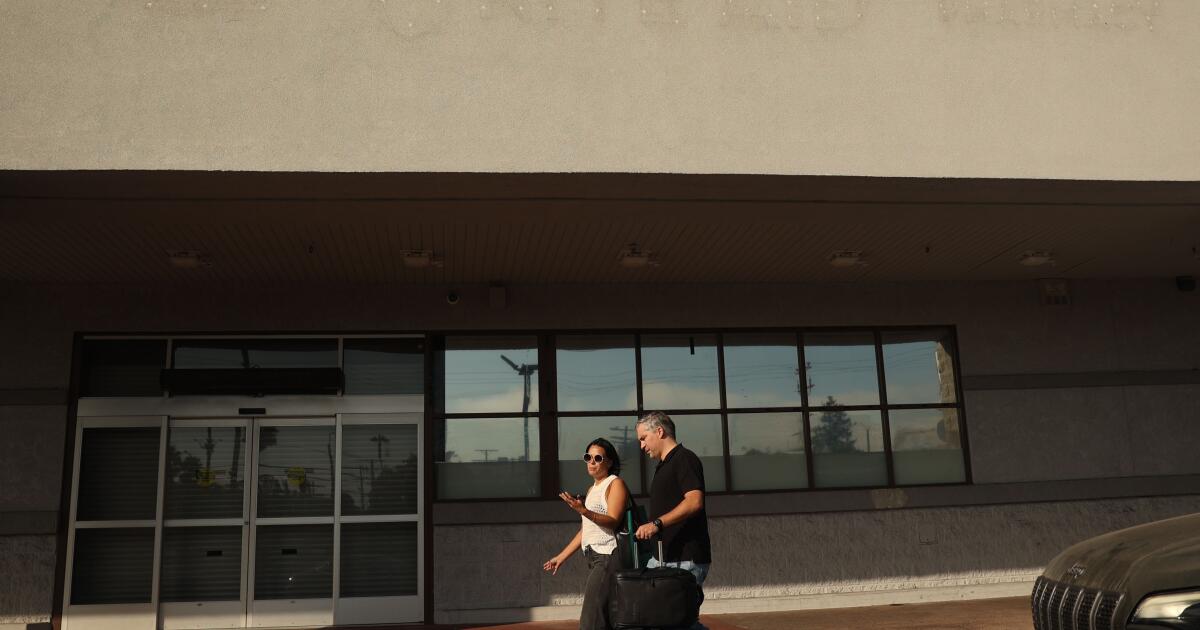
These are tough days for pharmacy chains.
From Gardena to Venice to Koreatown, storefronts that used to be Rite Aid drugstores sit empty. On Lincoln Boulevard, the outline of the Rite Aid logo can still be seen above shuttered doors.
The retail pharmacy chain has closed more than 200 stores since filing for Chapter 11 bankruptcy protection in 2023 and announced plans in July to shut down 18 more locations in California as it struggles to deal with creditors and lawsuits over opioid prescriptions.
Competitors CVS and Walgreens are also cutting costs and closing stores, reflecting challenges in the industry that have been brewing for years but have recently begun to accelerate, experts say. In June, Walgreens’ chief executive said about a quarter of the company’s 8,600 U.S. stores were underperforming and that a “significant number” of them could be closed.
Walgreens, CVS and Rite Aid are not in identical financial positions, but all three are being forced to examine their footprint and business model as they deal with lowering margins and changing consumer trends.
“Between the pressure on the front of the store plus the pressure on the pharmacy, it’s just getting harder and harder for these guys to operate,” said Brian Tanquilut, an industry analyst at Jefferies.
On the retail side, chain pharmacies are facing heavy competition from giants such as Amazon and Walmart, a drop in consumer spending and an increase in theft that can eat into profits, analysts said. On the pharmaceutical side, they’re seeing lower margins because of lower reimbursement rates for the drugs they provide to customers.
Much of the pharmacy pinch is rooted in the companies’ dependence on intermediaries called pharmacy benefit managers, or PBMs, who have significant control over how much pharmacies get reimbursed for the drugs they sell to customers.
Two of the largest benefit management companies, OptumRX and Caremark, are owned by insurance companies that have been looking to cut costs by pushing down reimbursement rates, which has punished the pharmacies’ bottom lines.
“The PBMs, all of which now are owned by the insurance companies, have been squeezing what they pay for drugs,” Tanquilut said. “As that has continued to come down, the profitability of these pharmacies has also waned,” he said.
Overall, the three pharmacy chains have struggled on Wall Street this year.
Walgreens stock price, which closed Friday at $9.25, has plummeted more than 65% since the start of the year. In June, when it missed earnings expectations for the quarter, the company warned investors it was bracing for more gloomy performance figures and cut its financial forecast for the fiscal year that ended in August.
A man rides his bike by Walgreens on Friday, Aug. 30, 2024 in Venice.
(Michael Blackshire / Los Angeles Times)
Rite Aid’s languishing stock, meanwhile, took a nosedive when the company entered bankruptcy late last year and the New York Stock Exchange moved to delist it.
CVS stands on slightly more solid ground, said Raymond James healthcare analyst John Ransom, because it owns insurance company Aetna, as well as Caremark, the pharmacy benefit manager.
“CVS is an integrated company,” Ransom said. “They’ve been able to integrate Caremark into the drug retail business in a way that’s made the drug retail business more healthy.”
But that has not made the company immune to market forces. Its stock, which closed at $57.24 Friday, is down 29% this year. CVS slashed its financial outlook and embarked on a $2-billion cost-cutting plan in early August. The company has also been closing locations since 2021, when it announced a realignment plan that would close 900 stores over three years.
CVS is on track to finish its store closures by the end of this year. After the closures, 85% of U.S. residents will still live within 10 miles of a CVS, said Amy Thibault, lead director of external communications for the company.
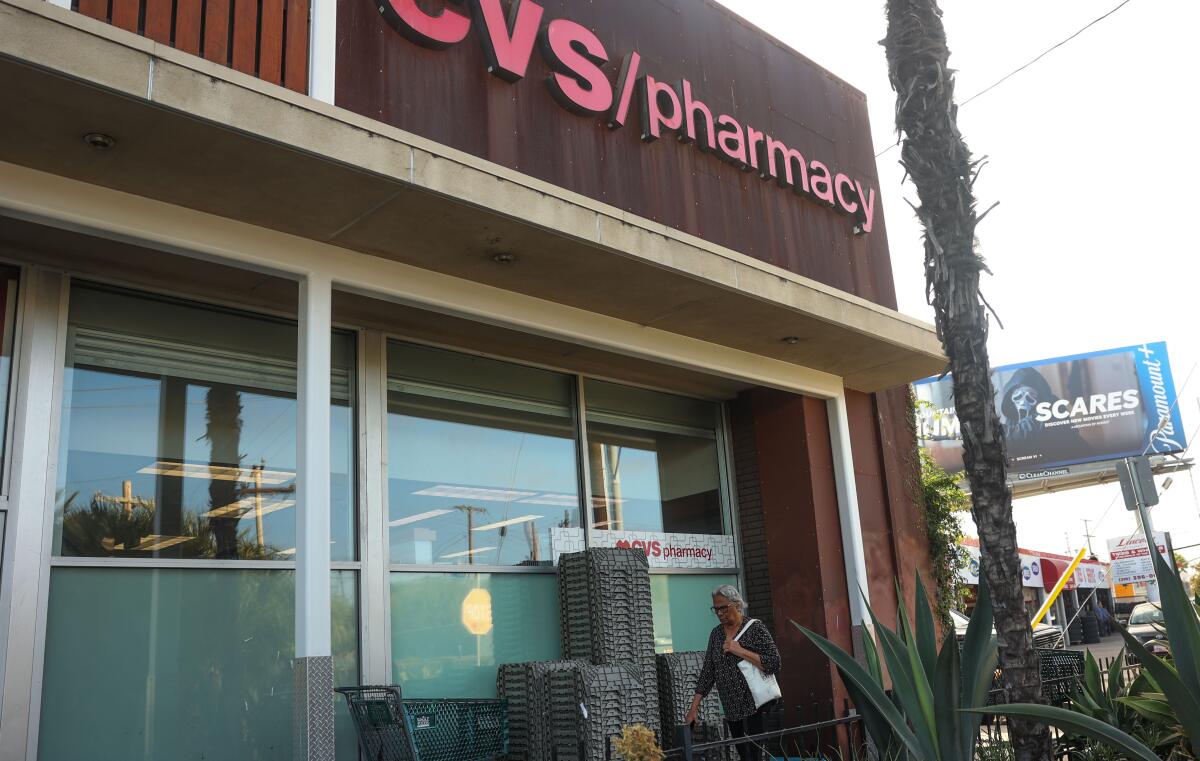
A woman walks by a CVS/Pharmacy on Friday, Aug. 30, 2024 in Venice.
(Michael Blackshire / Los Angeles Times)
“The store closure decisions are based on population shifts, consumer buying patterns, a community’s store density, maintaining access to pharmacy services, and future health needs to ensure we have the right kinds of stores in the right locations for consumers,” she said.
There is an overcrowding of drugstores in the country partly as a result of a real estate binge in the ‘90s, Ransom said.
“They’re shutting these stores down in urban markets where you go to a street corner and you see four pharmacies,” he said. “I think part of it is they did it to themselves.”
Walgreens external communications manager Samantha Stansberry said the company is being affected by increased regulatory and reimbursement pressures as well as higher levels of inflation, theft and other types of losses.
“Like most retailers, we have been facing a challenging operating environment,” Stansberry said. “These factors have resulted in a growing number of store closures across the country as we invest in our other locations to deliver a consistent customer experience.”
Walgreens was poised to acquire Rite Aid in a merger in 2015, but the deal ultimately fell through.
Koreatown resident Darleen Stoker was recently shopping at a Rite Aid on Larchmont Boulevard in Hancock Park and noticed rows of empty shelves. She wondered if it was a sign that the location was closing, she said.
“My kids go to Costco now,” Stoker said. “Rite Aid is more for when you realize last minute you need nail polish.”
Other customers in the store said the shelves have been empty for at least two months.
Rite Aid did not respond to multiple requests for comment.
“The remaining Rite Aid stores face a lot of the challenges that they were facing when they were trying to bridge with Walgreens,” Tanquilut said. “It’s a lot of pressure from other retailers, whether that’s the dollar stores, the Walmarts, the Targets of the world, or online retail like Amazon.”
Retail pharmacies are also struggling to adapt to a changing consumer more focused than ever on value, Tanquilut said. Customers have started to realize that sodas cost less at a grocery store than a drugstore, he said.
As inflation drives everyday costs up, consumers are tightening their belts and may be limiting impulse purchases on items found at a drugstore such as snacks and beauty products. A significant portion of purchases at drugstores are spontaneous, Tanquilut said, as customers roam around waiting for their prescription.
Tanquilut said the closing of locations could help CVS, Walgreens and Rite Aid weather the harsh industry conditions that have prompted cost-cutting measures. The density of pharmacies in the country is higher than it needs to be, he said.
“We are ‘over-pharmacied’ as a society,” Tanquilut said. “From a profitability perspective and from a competition perspective, reducing the number of retail pharmacies is not a bad thing.”
Business
How high are the prices for a Shohei Ohtani, Decoy bobblehead? A seller wants it to fetch $69,420

The Shohei Ohtani bobblehead doll, with the Japanese star holding his dog, Dekopin, was free when the Dodgers handed it out to fans with tickets — and those persistent enough to line up for hours outside Dodger Stadium before Wednesday night’s game.
Now, if you want to get one, you better get ready to dig deep into your wallet.
The sought-after bobblehead dolls are currently selling for hundreds of dollars online, just two days after the Dodgers’ giveaway.
“I kind of cringe, as a dealer, at how much some of this stuff is going to cost,” said Matt Federgreen, owner of Beverly Hills Card Shop, who has dealt with sports collectibles since 1983.
A total of 40,000 bobbleheads were given away before the game against the Baltimore Orioles, but more than 53,000 tickets were sold. Unless fans arrived at the stadium early, they were out of luck.
The Shohei Ohtani and Decoy bobblehead doll is listed online from $150 to $69,420.
(Los Angeles Dodgers)
Fans did get to see Ohtani’s dog, whose nickname is “Decoy,” throw out the first pitch.
To get the in-demand collector’s item now, people are paying anywhere between $150 to more than $1,500, according to listings and bids found on eBay and Facebook’s Marketplace.
The Dodgers also gave away a limited gold-colored Ohtani bobblehead, which is selling for hundreds of dollars more.
One listing for the gold-colored Ohtani on eBay asked for a tongue-in-cheek amount of $69,420, but it had no bids as of Friday afternoon.
Ohtani’s international popularity has sent prices soaring for some of his memorabilia. Some of the gold-colored bobbleheads have already sold online for $1,500 or more.
“Everything Ohtani that comes out right now, there’s profit to be made and people are going to jump on that,” Federgreen said.
One listing on eBay was selling the Ohtani and Decoy bobblehead for $169.50 on Friday afternoon, while another asked for $227.77. One seller has sold more than 30 dolls.
Another posting, on Facebook’s Marketplace, asked for $150 for the doll, but noted the box had been opened.
But listings for the gold doll, or for both of them, were found for more than $1,000.
One person in Anaheim, in a Facebook post, asked for $1,600 for the gold doll. Another, for both dolls, asked for $1,000, and included a picture of the dolls with Dodger Stadium in the background to add a bit more authenticity.
The Times reached out to several people who were selling the dolls online but did not immediately hear back from sellers.
Some postings asked for more than $2,000 but, as Federgreen noted, showed no signs that someone had bid or paid that price.
The Dodgers gave away another Ohtani bobblehead in May, five months after he signed a 10-year, $500-million deal. Fans also stood in line a good three hours before that game to make sure they got one.
For Federgreen, he said Ohtani is one of the reasons why his business has been doing so well recently.
Trading cards and memorabilia have seen increased popularity in recent years, he said, and stars such as Ohtani have helped.
On Thursday Topps, which is owned by Fanatics Collectibles, announced it was partnering with Ohtani in an exclusive trading card deal that will include cards, autographs and game memorabilia.
Details of how much the deal is worth weren’t released, Fanatics said it was a long-term agreement.
For Federgreen, he understands the demand for the Ohtani doll, but issues a mild warning for people willing to drop a few hundred bucks for it.
“There’s a lot of profiteering going on,” he said. “I don’t mess with stuff with things that are maybe short-term value.”
He notes that some collecting items that suddenly spike up in price will often dip down just as fast.
“It’s a cute bobblehead,” he said. “But you can buy something vintage for the same amount of money that retains value.”
-

 Connecticut1 week ago
Connecticut1 week agoOxford church provides sanctuary during Sunday's damaging storm
-
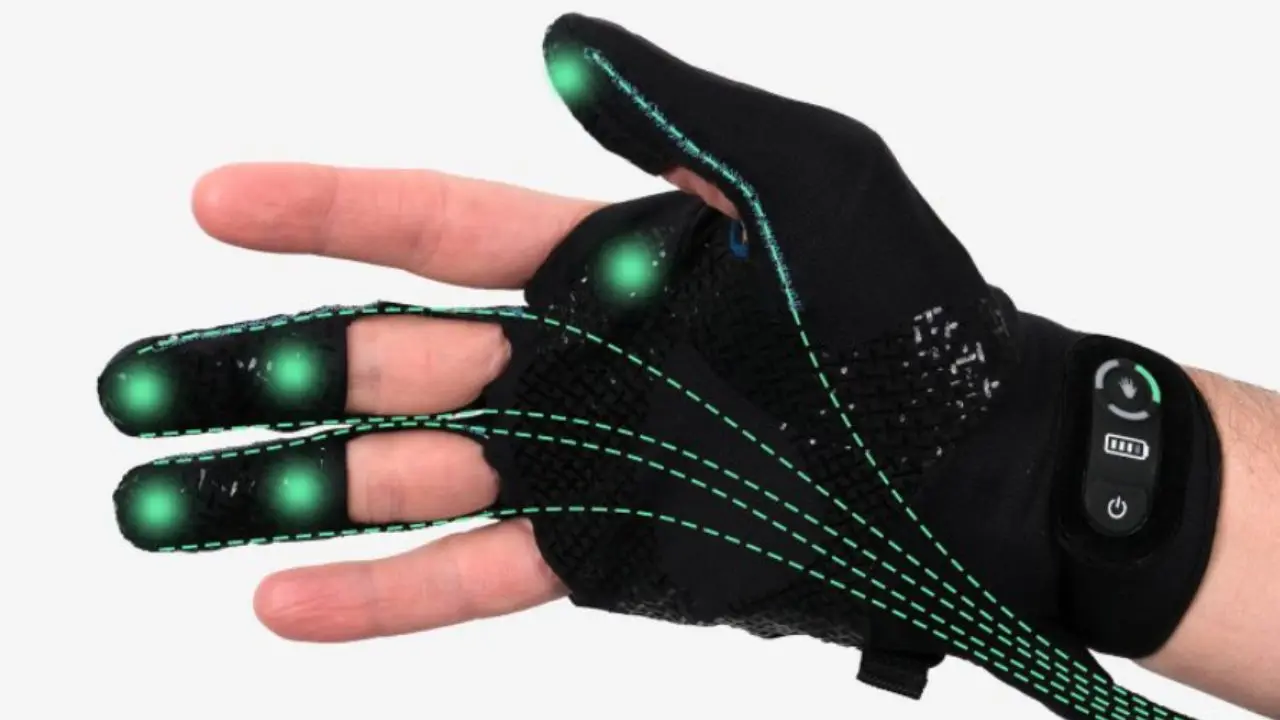
 Technology1 week ago
Technology1 week agoBreakthrough robo-glove gives you superhuman grip
-
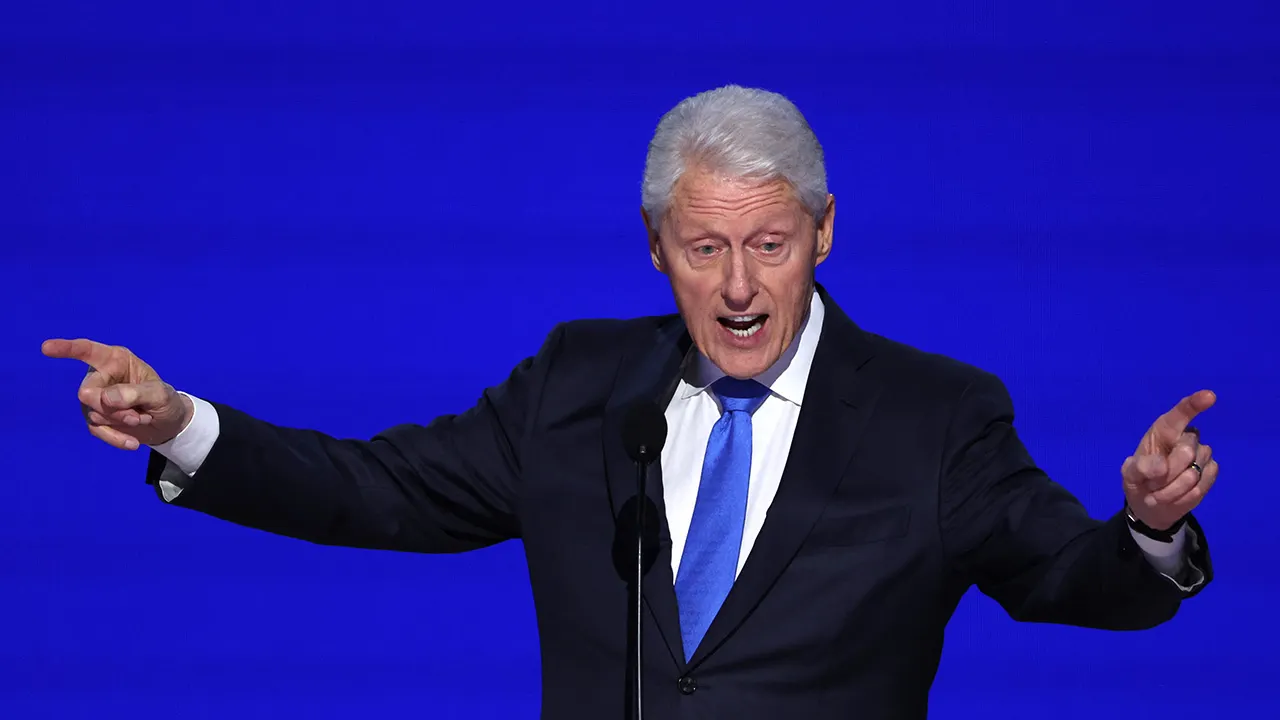
 Politics1 week ago
Politics1 week agoClinton lauds Biden as modern-day George Washington and president who 'healed our sick' in DNC speech
-

 Politics1 week ago
Politics1 week ago2024 showdown: What happens next in the Kamala Harris-Donald Trump face-off
-

 News1 week ago
News1 week agoWho Are Kamala Harris’s 1.5 Million New Donors?
-
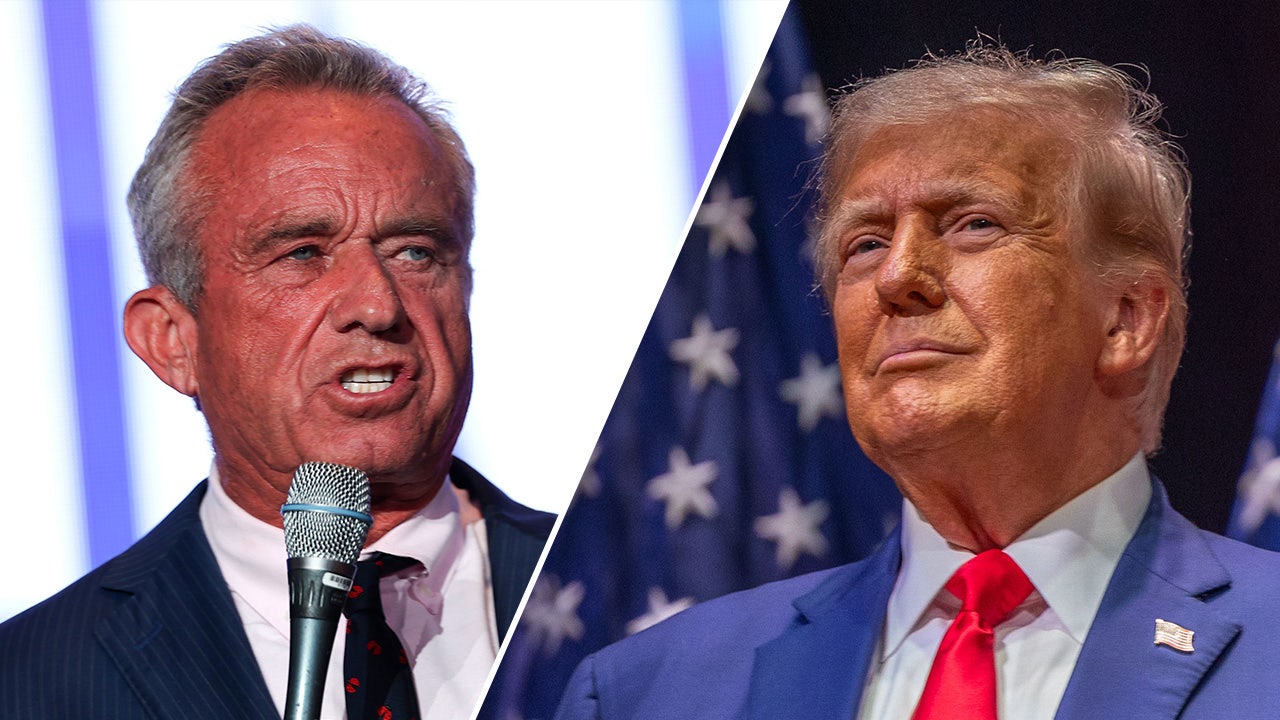
 Politics1 week ago
Politics1 week agoTrump taunted over speculated RFK Jr endorsement: 'Weird as hell'
-
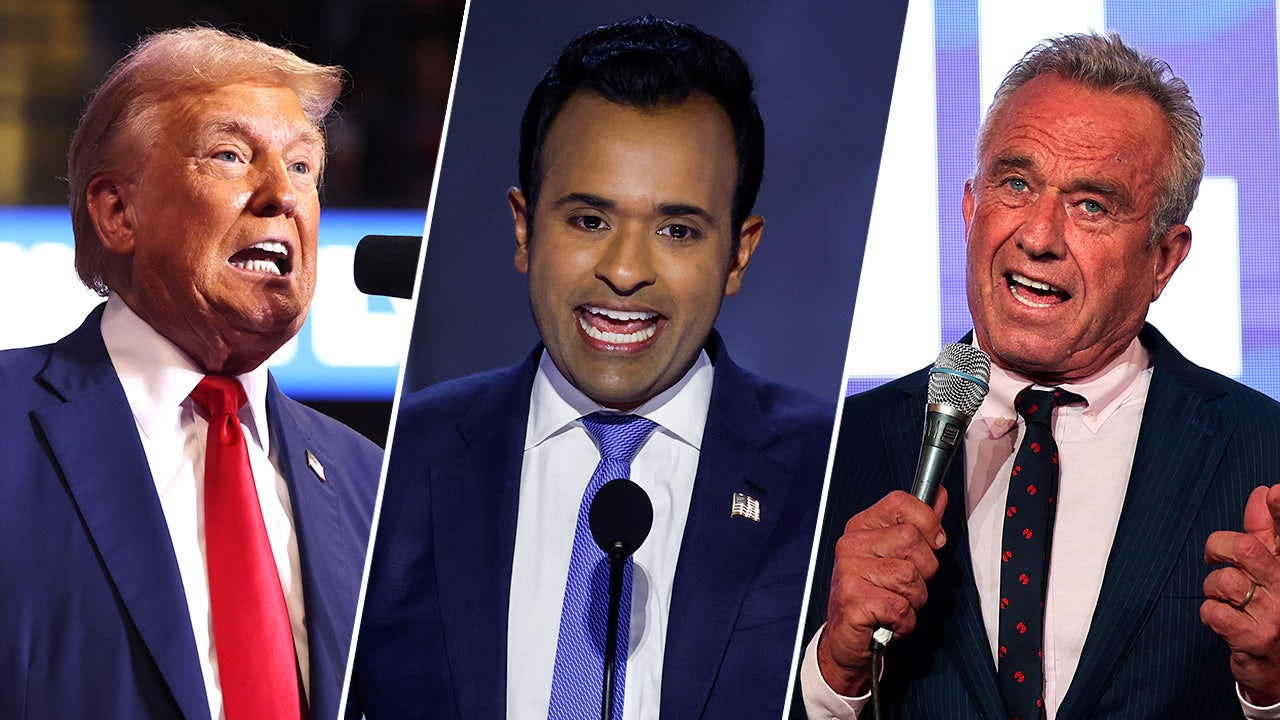
 Politics1 week ago
Politics1 week agoVivek Ramaswamy sounds off on potential RFK Jr. role in a Trump administration
-

 World6 days ago
World6 days agoPortugal coast hit by 5.3 magnitude earthquake
